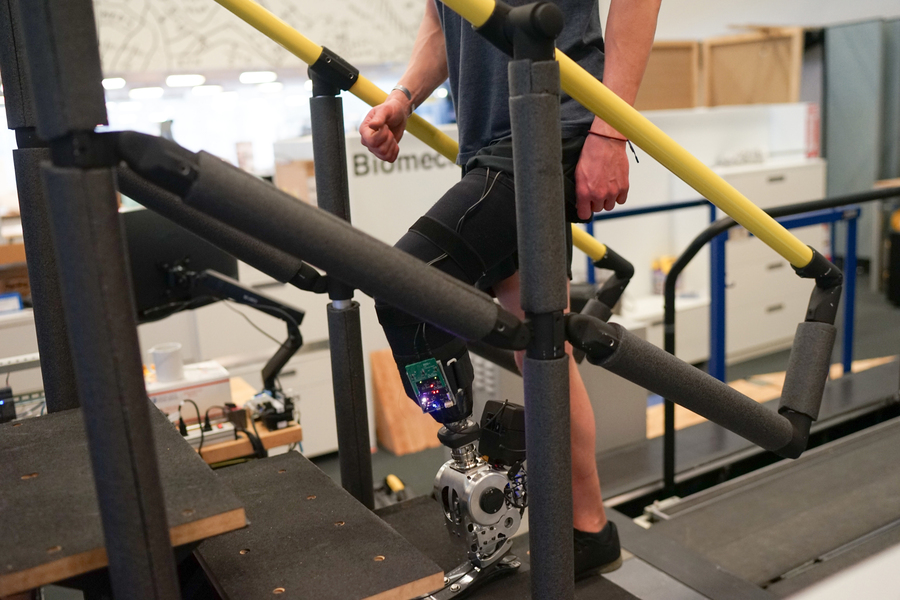A new type of assistive technology has advanced the potential for prosthetic limbs by enabling neural control of prostheses, allowing amputees to walk more naturally. MIT researchers, in collaboration with Brigham and Women’s Hospital, have developed a surgical procedure that reconnects muscles in the residual limb, enhancing proprioceptive feedback—the brain’s ability to sense where the prosthetic limb is in space.
Unlike traditional prosthetics, which rely on robotic algorithms to control movement, this new neuroprosthetic interface allows the user’s nervous system to drive the prosthetic limb. In a study involving seven patients, the researchers found that those who underwent this surgery could walk faster, avoid obstacles more effectively, and climb stairs more naturally than those with traditional amputations. The surgery, known as the Agonist-Antagonist Myoneural Interface (AMI), can be done during or after an amputation and has been performed on around 60 patients worldwide.
Features of the New Neural Prosthetic Technology
- Neural Control: The key feature of this prosthetic technology is its ability to be fully controlled by the user’s nervous system. Traditional prosthetics rely on pre-programmed algorithms, but this new system allows the user’s brain to directly modulate movement, providing a more natural gait.
- Agonist-Antagonist Muscle Communication: The AMI surgery preserves the dynamic communication between pairs of muscles, allowing for more precise control. By connecting the two ends of the muscles during or after amputation, patients can achieve a full range of motion with their prosthetic limb, as if it were their own.
- Reduced Pain and Muscle Atrophy: Patients experienced reduced muscle atrophy and pain after the surgery compared to traditional amputation methods. This suggests that the procedure not only improves functionality but also enhances the overall well-being of the user.
This breakthrough in assistive technology is a pivotal step towards creating prosthetics that not only mimic human movement but also feel like an integral part of the body, enhancing both physical and emotional recovery for people with amputations.Read the original source: https://news.mit.edu/2024/prosthesis-helps-people-with-amputation-walk-naturally-0701


 Back to News
Back to News

















